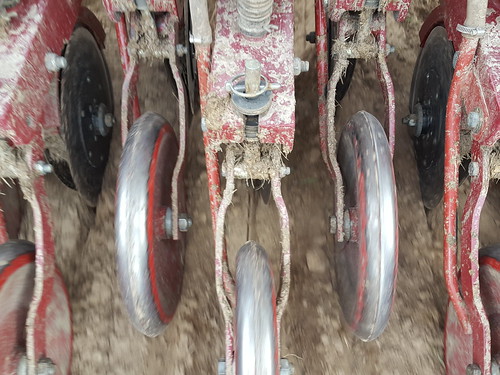Before heading to the field, take the time to make sure your equipment’s up to the task at hand
By Ryan McGeeney
U of A System Division of Agriculture
March 9, 2018
Fast Facts:
- Planting equipment should be checked ahead of growing season
- Cleaning & calibrating your drill is essential to success
(350 words)
LITTLE ROCK – As winter begins its bumpy transition to spring throughout Arkansas, many producers are readying to prep their fields for planting season.
Before the hour is at hand, however, be sure and take the time to make sure your equipment is up to snuff.
Dirk Philipp, Associate Professor of Animal Science for the University of Arkansas System Division of Agriculture, says that among all planting equipment used — especially for grassland and pasture managers — the drill is usually the most important.
“It’s importance really can’t be overstated,” Philipp said. "Planting new forages is a long-term investment that doesn’t come cheap. Correct seeding rates, planting evenly at the right depth, and achieving uniform forage stands are important for long-term forage persistence.”
No-till drills are a common tool in grassland agriculture. While robust, they need to be checked before the season. Philipp recommends following these basic maintenance tips to avoid becoming stranded in the field:
- Check the major components of the drill for proper working and cleanliness
- Seed boxes need to be clean and empty year-round, otherwise moisture and rust accumulate, and seeds may even sprout in them
- Tubes and hoses are the prime location for spider webs. Use a long rod and rag to pull through all the tubes to remove all blockages
- Planting wheels may get wobbly over time, so bearings may have to be replaced. The wheels need to be able to spin freely to be effective. Remove the dirt and mud from above the wheels to not impede the seed flowing during planting
- When it comes to bearings and other moving parts, remember that there are several points on each drill that can be maintained with grease. Check all of them before the season. Some drills feature hydraulic setups, so check the hoses for leakage
- Try the drill out before calibrating and planting with the real seeds. It’s a good idea to put some leftover seed into the boxes and drive for several hundred feet to check on proper and even seed delivery
To learn about equipment maintenance, contact your local Cooperative Extension Service agent or visit www.uaex.uada.edu.
About the Division of Agriculture
The University of Arkansas System Division of Agriculture’s mission is to strengthen agriculture, communities, and families by connecting trusted research to the adoption of best practices. Through the Agricultural Experiment Station and the Cooperative Extension Service, the Division of Agriculture conducts research and extension work within the nation’s historic land grant education system.
The Division of Agriculture is one of 20 entities within the University of Arkansas System. It has offices in all 75 counties in Arkansas and faculty on five system campuses.
Pursuant to 7 CFR § 15.3, the University of Arkansas System Division of Agriculture offers all its Extension and Research programs and services (including employment) without regard to race, color, sex, national origin, religion, age, disability, marital or veteran status, genetic information, sexual preference, pregnancy or any other legally protected status, and is an equal opportunity institution.
# # #
Media Contact: Ryan McGeeney
Communication Services
U of A System Division of Agriculture
Cooperative Extension Service
(501) 671-2120
rmcgeeney@uada.edu
